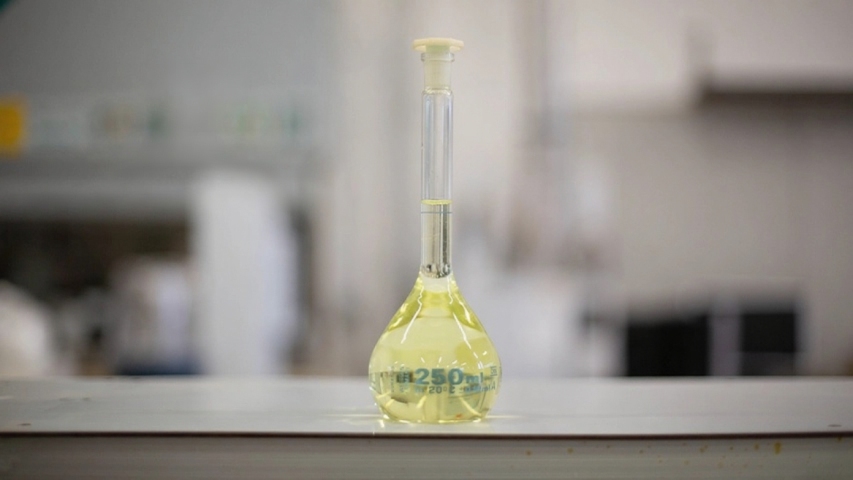Sodium Hypochlorite Supplier From Dubai-UAE And Turkey

Sodium Hypochlorite Overview
Chemical Name: Sodium Hypochlorite
Chemical Formula: NaOCl
Appearance: Clear, pale greenish-yellow liquid
Odor: Characteristic chlorine-like smell
Concentration (typically): 10–15% available chlorine (commercial-grade solutions)
Sodium hypochlorite is an inorganic compound widely used as a disinfectant, bleaching agent, and oxidizing agent. It is the active ingredient in liquid household bleach and plays a critical role in water treatment, sanitation, and industrial processes.
Sodium hypochlorite can be produced commercially by the reaction of chlorine gas with caustic soda (sodium hydroxide), another essential industrial chemical, making both chemicals complementary in industrial applications.
Key Properties of Sodium Hypochlorite
-
Molecular Weight: 74.44 g/mol
-
Density: ~1.1–1.2 g/cm³ (depending on concentration)
-
Solubility: Completely soluble in water
-
Stability: Decomposes under heat or sunlight; store in cool, dark conditions
Sodium hypochlorite is a strong oxidizer and a highly effective antimicrobial agent, making it essential across multiple industries.
Types of Sodium Hypochlorite by Application and Concentration
Sodium hypochlorite solutions are categorized based on application and available chlorine concentration:
Household Grade (Dilute Solutions)
-
-
Concentration: 3–9% available chlorine (commonly 5.25–6.15%)
-
Applications: Laundry, general disinfection, and household cleaning
-
Packaging: Small, ready-to-use containers for consumer convenience
-
Industrial/Commercial Grade (Strong Solutions)
-
-
Concentration: 10–15% available chlorine (trade percent ~15% corresponds to ~12.44% by weight)
-
Applications:
-
Water treatment (disinfecting drinking water; JWWA K 120-2005 standard ≥ 5%)
-
Commercial and institutional sanitization (food processing, hospitals, and industrial facilities)
-
Pulp and textile bleaching
-
Chemical manufacturing
-
-
Grades of Sodium Hypochlorite by Purity
Sodium hypochlorite is also classified by purity to ensure suitability for specific applications:
-
Reagent Grade: High purity for laboratory analysis, research, and chemical synthesis. Available in 4–15% available chlorine, depending on use.
-
USP/BP Grade: Meets stringent pharmaceutical and medical standards for topical and medical applications. Dilute solutions (0.5–6% NaOCl) are used in medical settings like Dakin’s solution.
-
Food Additive / FCC Grade: Certified for food-contact surfaces and equipment sanitation. Strict limits on impurities like heavy metals.
-
Technical Grade: Industrial or commercial grade for water treatment, bleaching, or other applications where ultra-high purity is not required. Typically, 10–15% available chlorine.
Applications of Sodium Hypochlorite
Water Treatment
Sodium hypochlorite disinfects drinking water, wastewater, and swimming pools, effectively eliminating pathogens like cholera and typhoid. It also provides emergency disinfection of non-potable water.
Food Industry
Used to sanitize food-processing equipment, preparation surfaces, and transportation containers. It ensures compliance with hygiene standards in restaurants, factories, and grocery storage.
Medical and Healthcare
Hospitals, clinics, and laboratories rely on sodium hypochlorite for disinfecting surfaces and reusable equipment, preventing the spread of infectious diseases.
Household Cleaning
Diluted solutions are used in bathrooms, kitchens, and high-touch surfaces to prevent colds, flu, and other infections. It is especially useful during natural disasters for surface decontamination.
Industrial Applications
Employed in textile bleaching, paper pulp processing, and chemical manufacturing as an oxidizing agent or intermediate.
Packing and Container Loading of Sodium Hypochlorite
Sodium hypochlorite is supplied in various packaging options to suit different applications and shipment sizes:
-
Plastic Drums: 25L and 50L for small-scale or household use.
-
IBC Tanks: 1000L for bulk industrial supply.
-
Tanker Trucks: For large-volume shipments.
Container Loading
A standard 20-foot container can typically accommodate up to 20–22 tons of sodium hypochlorite in drums or 16–18 tons in IBC tanks, depending on the packaging configuration and safety regulations. Proper stacking and secure loading are essential to prevent leaks and ensure safe transportation.
Storage and Handling
-
Temperature: Store below 29°C (85°F); ideally < 24°C (75°F)
-
Light Protection: Use opaque containers to minimize decomposition
-
Avoid Contamination: Keep away from acids, heavy metals, and reducing agents
-
pH Maintenance: Maintain pH >11.5 to ensure stability
-
Ventilation: Store in well-ventilated areas to prevent chlorine gas accumulation
Safety: Strong oxidizer; can cause skin and eye irritation. Use gloves, goggles, and PPE during handling.
Supplier Sodium Hypochlorite
We provide high-quality household, industrial, and technical-grade sodium hypochlorite solutions suitable for water treatment, medical, sanitation, and industrial applications. Our supply chain guarantees safe delivery, stable concentration, and compliance with international standards.
Sodium Hypochlorite Specification
| General | |
|---|---|
| CAS No. | 7681-52-9 |
| Invent Hazard Material (IMO/EU) classification | C-50 |
| Physical properties | |
| Appearance | Green/yellow liquid |
| Available Chlorine | 10 to 15% |
| Density [g/ml] | 1.16 to 1.17 |
| Freezing Point [°C] | -15 to -18 C |
| Odor | Chlorine |


